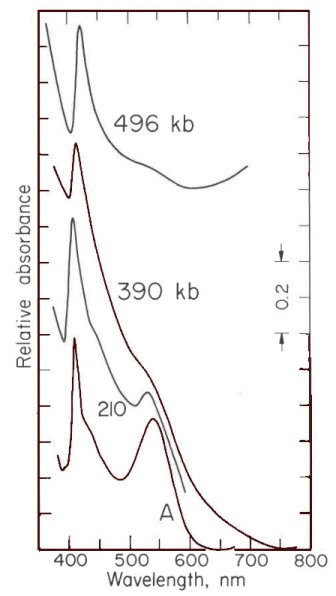
Rhodonite spectra. The spectra of three samples recovered after being shock-loaded to 210, 39O, and 496
kbars are compared with the spectrum of an unshocked rhodonite (A) showing the loss of the Mn3+ band at 540 nm
in the more intensely shocked samples. These spectra have been normalized to represent the absorbance of a sample
of 0.15 mm thickness but have been drawn with vertical displacement in absorbance for purposes of contrast and clarity.